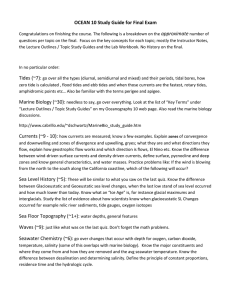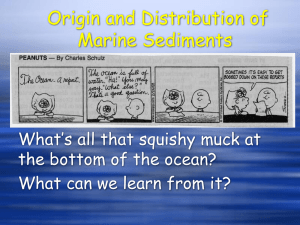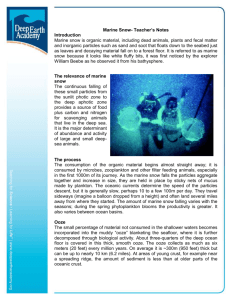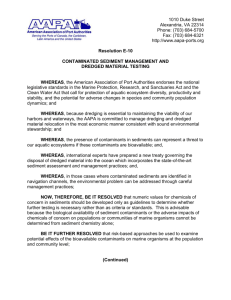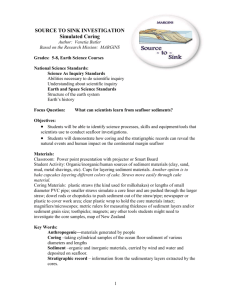Importance of pelagic environments
advertisement
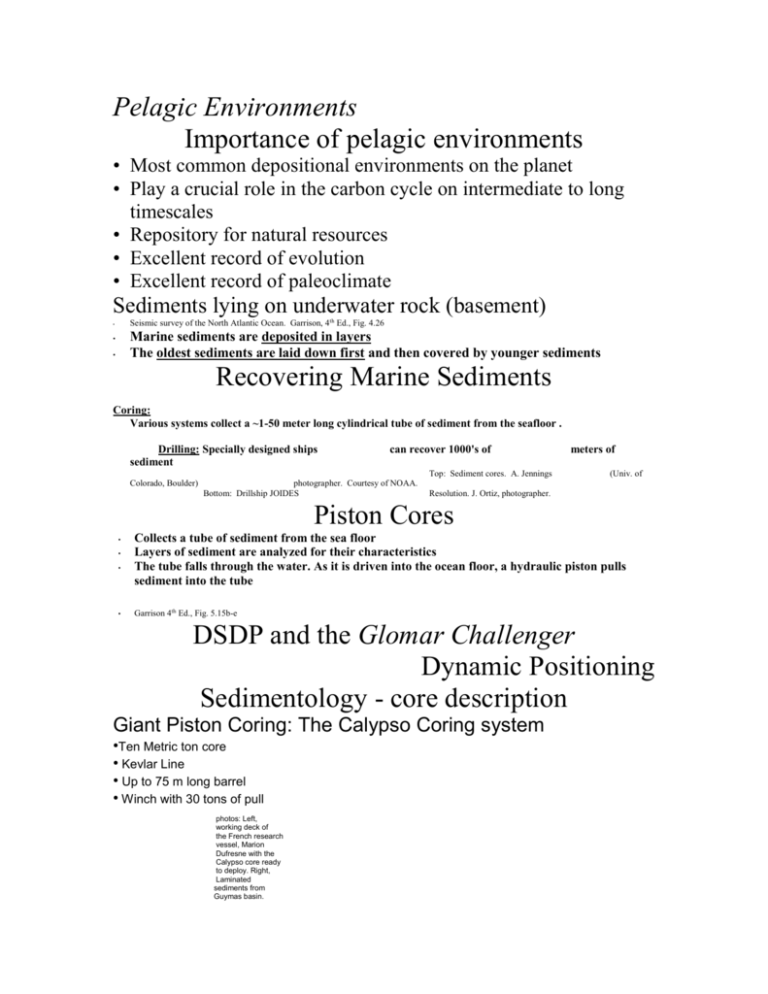
Pelagic Environments Importance of pelagic environments • Most common depositional environments on the planet • Play a crucial role in the carbon cycle on intermediate to long timescales • Repository for natural resources • Excellent record of evolution • Excellent record of paleoclimate Sediments lying on underwater rock (basement) Seismic survey of the North Atlantic Ocean. Garrison, 4th Ed., Fig. 4.26 • Marine sediments are deposited in layers The oldest sediments are laid down first and then covered by younger sediments • • Recovering Marine Sediments Coring: Various systems collect a ~1-50 meter long cylindrical tube of sediment from the seafloor . Drilling: Specially designed ships sediment can recover 1000's of Top: Sediment cores. A. Jennings Colorado, Boulder) photographer. Courtesy of NOAA. Bottom: Drillship JOIDES meters of (Univ. of Resolution. J. Ortiz, photographer. Piston Cores • • • • Collects a tube of sediment from the sea floor Layers of sediment are analyzed for their characteristics The tube falls through the water. As it is driven into the ocean floor, a hydraulic piston pulls sediment into the tube Garrison 4th Ed., Fig. 5.15b-e DSDP and the Glomar Challenger Dynamic Positioning Sedimentology - core description Giant Piston Coring: The Calypso Coring system •Ten Metric ton core • Kevlar Line • Up to 75 m long barrel • Winch with 30 tons of pull photos: Left, working deck of the French research vessel, Marion Dufresne with the Calypso core ready to deploy. Right, Laminated sediments from Guymas basin. Turbidite facies model of Bouma Turbidity currents on the slope and rise Turbidity currents of the Grand Banks Earthquake Turbidity currents at work: Submarine Canyons Turbidity currents at work: Submarine fans Interlayering of • Turbidites • Mud layers • Debris flows Bottom currents and contourites on the continental rise North Atlantic Bottom currents Deep sea giant mudwaves Composition of Marine Sediments • Terrigenous • Clay, silt, sand, rare pebbles, etc. • Hydrothermal (authigenic) • Calcium carbonate • Foraminifera, Coccolithophorida • Amorphous Silica (opal) • Diatoms, Radiolara • Red Clay (deep sea clay) Distribution of marine sediments Dropstones and Ice Rafted Debris (IRD) Metaliferous sedimengs form in Hydrothermal zones Radiolaria, Forminifera, and Coccolithophorida Controls on marine sediment distribution and preservation • • • • • • Distance from coast Water depth Water chemistry Settling and reworking Faunal and floral distribution Tectonics Carbonate dissolution increases with • • • • • • Decreasing [CO3=] ion Decreasing temperature Increasing pressure Increasing water flow Increasing bottom water CO2 Increasing organic matter concentration Silica vs. Carbonate Preservation • • • Silica is undersaturated everywhere in the ocean but particularly in surface water. Carbonate ion is undersaturated in deep water. This results in inverse preservation patterns for Silica and Carbonate in marine environments Production and water depth influence sediment type Bathymetry and plate motion



